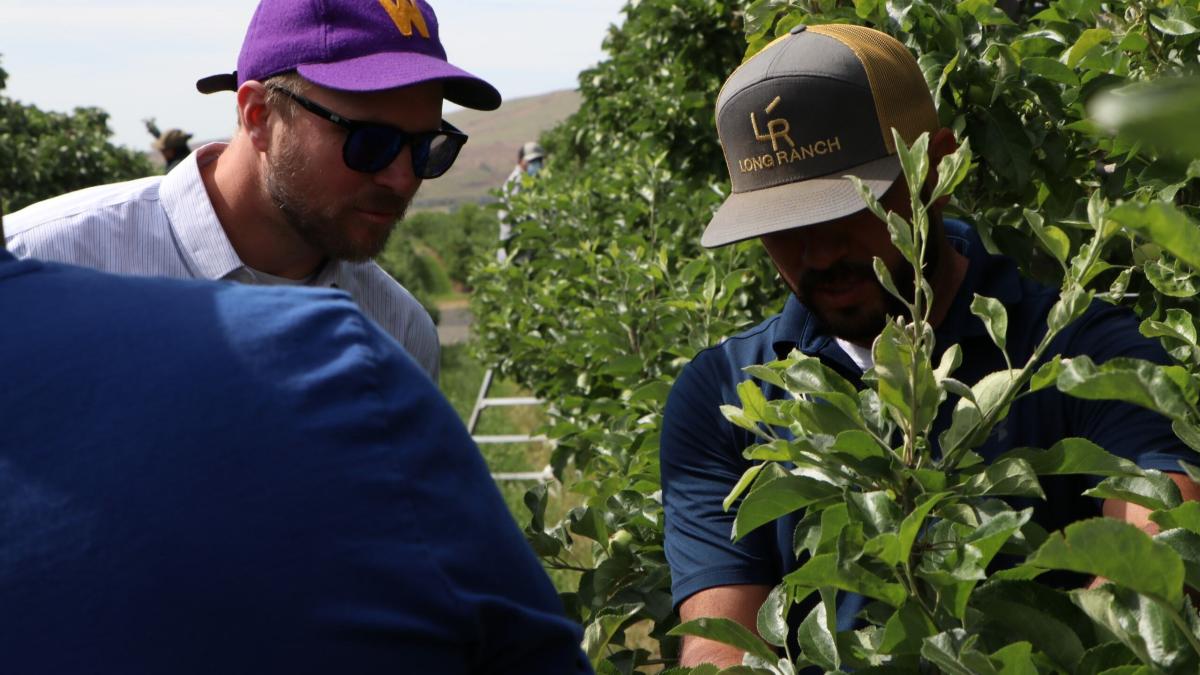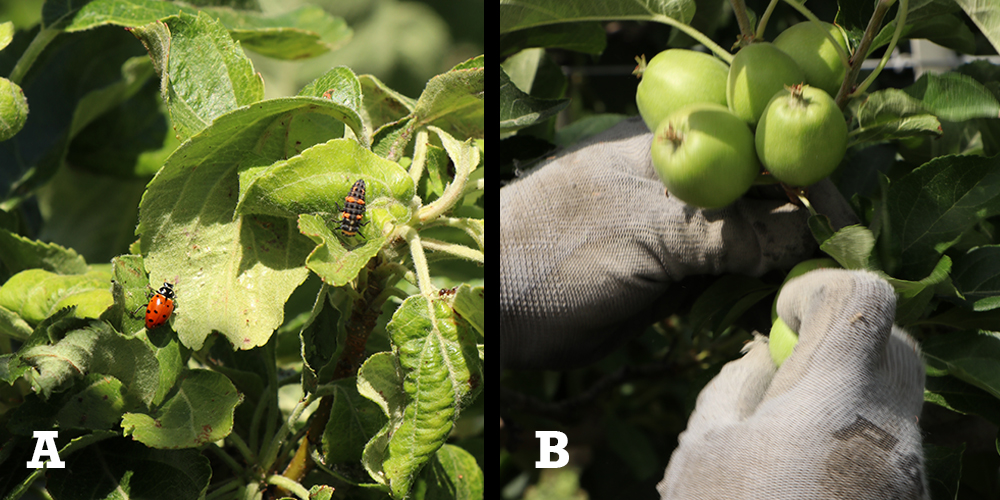
June 2025. We headed to the Yakima Valley on an early June morning to meet Pablo Palmández, PNASH Center's Agricultural Research and Safety Extensionist. Pablo had arranged for us to visit the Long Ranch to meet with manager, Eladio Gonzales. At Long Ranch their Honeycrisp apple harvest requires specific growing conditions, skilled management, and intensive labor. Washington state accounts for approximately 50% of the Honeycrisp apples grown in the United States. I want to share with you two things I learned on our tour that day: 1) a pest management overview, and 2) the intensity of labor involvement with the production of apples.
Long Ranch practices Integrated Pest Management (IPM) by utilizing basic pest traps and relying on a skilled labor force for reporting. The pest traps are placed throughout the farm and periodically checked by their pesticide expert to determine which pests are present on the farm and their exact location. At the same time, their skilled labor is working on the farm, reporting any pests, fungi, or viruses they encounter. Their expert collects this information and mixes the appropriate organic spray to address different problems detected. Eladio reviewed with us the pests found on the farm the previous week and what had been sprayed for the week we visited. Long Ranch is an expert in organic pesticides, employing ladybugs to eliminate aphids in their organic Honeycrisp apple trees (see image A below).

Orchard ladder and platform safety video
This training video prepares workers with helpful safety tips when harvesting with ladders and platforms.
Honeycrisp is a spur-bearing apple variety. Honeycrisp produces clusters of apples on short shoots called spurs, as shown in image B. These clusters must be thinned back to the single terminal bud, which will be the most marketable fruit. This thinning is complete by hand and with a sharp pair of pruning shears. Our visit coincided with the thinning; the co-ed year-round labor force was efficiently moving from one tree to another, trimming baby apples and dropping them onto the ground. The hundreds of small, round apples on the ground are not cleaned up, but instead are allowed to feed the soil.
The labor force also taught us about ladder safety. The Honeycrisp are trellised at Long Ranch. This trellising technique allows workers to position their ladders in the center of the tree, enabling them to safely reach the edges while moving the ladder as needed. Trellising offers safety advantages, such as reducing the need for excessive reaching and ensuring stable ladder placement. Ladder safety was a significant concern for this labor force.
View the June 2025 Ag Injury Report
Honeycrisp apples are prone to sunburn; therefore, netting or shading must be provided to protect them. Long Ranch utilized a few acres of old cherry trees. They converted the cherry acreage to Honeycrisp, using the preexisting netting as sun protection. Long Ranch's innovative management team designed netting structures to hang the netting from, allowing laborers to open and close it from the ground easily. This provides sun and heat protection for both the apples and the workers.
It was a warm afternoon filled with the love of the Honeycrisp (my favorite), a farm, and great people. We have been invited to visit again, next time we plan to see one of the award-winning bulls.
This PNASH Recap was written by Judy Lysiak, Program Coordinator.
Dr. Eddie Kasner, PNASH Outreach Director, Sarah Fish, Graphic Designer, Pablo Palmández, Agricultural Research and Safety Extensionist, and Judy Lysiak, attended this visit to Long Ranch.
For more information, see 2024 Cost and Return Estimates of Establishing, Producing, and Packing Honeycrisp Apples in Washington and H-2A and Apples.


